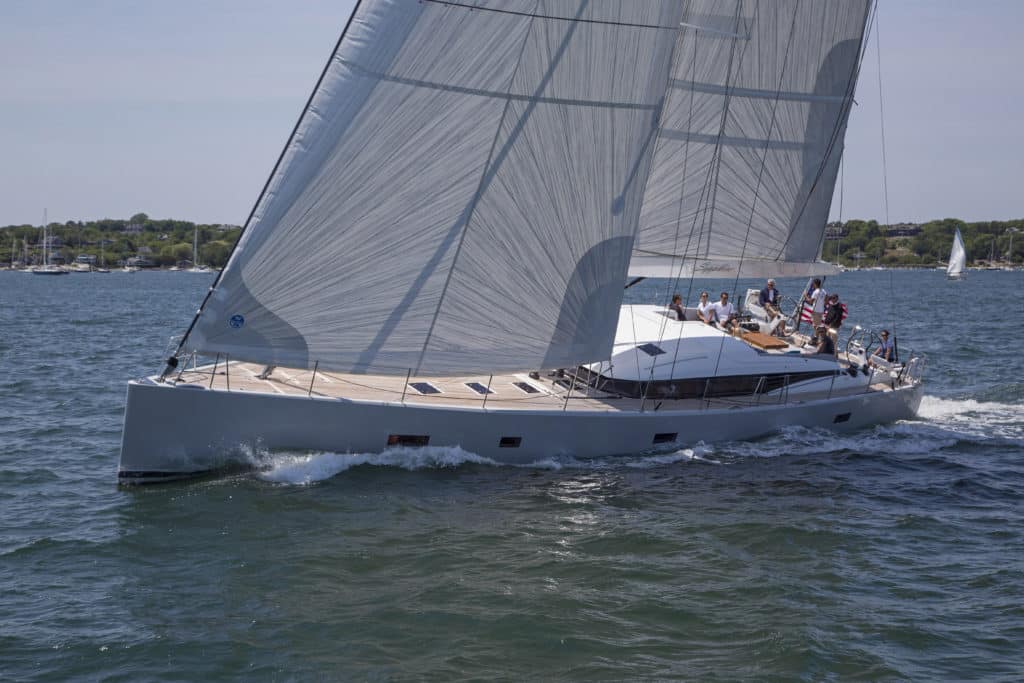
One of the great perks of working as a yachting writer in Newport, Rhode Island, in my opinion quite easily the best sailing town in the United States (sorry, Annapolis, San Francisco, et al.), is that over the course of any given summer, the hottest, biggest, fastest and coolest boats sail in and out of the harbor. And that’s not counting the amazing number of long-range cruising boats that also call here every year, or the rather astounding fleet of former America’s Cup racers and Bristol yachts for which Newport is home.
What’s even better is that I actually get to take a spin on so many of them.
This past season, on a glorious Newport summer afternoon with the classic local southwesterly sea breeze coursing up Narragansett Bay, I enjoyed one of my favorite forays of 2016 when I took the helm of the sleek, powerful CNB 76 Sapphire. It was, quite simply, a joy to drive. When it comes to true performance sailing, you can’t beat waterline length, and at 76 feet, this rangy and elegant cruising boat, the lines of which were crafted by the master French naval architect Philippe Briand, had it in abundance.
Sapphire is among the inaugural collection of new 76-footers launched by the high-end French builder Construction Navale Bordeaux, which offers a wide range of fine custom and semicustom sailboats. Sapphire is also the first to arrive in the United States, where her experienced owner planned on cruising in Maine for the summer before heading south for the Caribbean this fall. For more on the CNB 76 line, visit the builder’s website (cnb.fr). Before setting sail, we enjoyed a quick tour of the layout below deck, fashioned by the interior designer Jean-Marc Piaton. The raised saloon offers plenty of natural light in the spacious main cabin. The owner’s suite forward features a forward-facing double berth, an unusual but effective arrangement. The galley, just adjacent to the captain’s quarters on Sapphire, is superb.
However, Sapphire’s brilliant colors shone brightest under sail.
For such a big boat, she’s remarkably easy and efficient to operate. The cockpit is expansive, with loads of comfortable seating but also plenty of space to trim sails and conduct maneuvers.
But the place you really want to be on Sapphire is behind one of her twin wheels. At first her sheer size is daunting — this is one long, beamy, commanding sailing machine — but after a tack or two you begin to get accustomed to her speed and responsiveness. In 12 to 14 knots of wind, hard on the breeze, she easily registered double-digit numbers. And she could point like a witch. The best part of a great day was overtaking an old America’s Cup racer, known for her windward ability, to weather, and quickly leaving her in our wake. That was just cool.
— Herb McCormick








